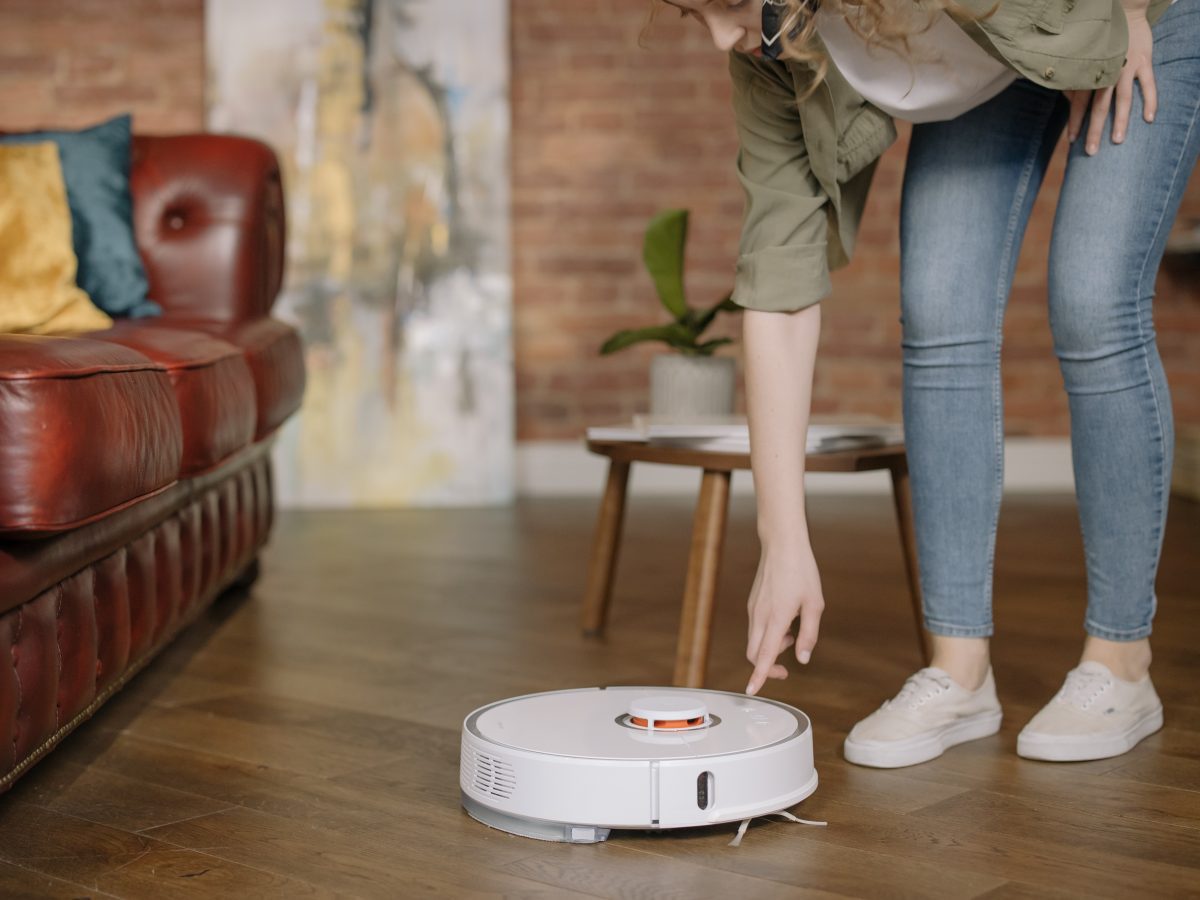The International Federation of Robotics reports that the service robot industry in the United States is a $5.2 billion dollar market. The earliest home robots were introduced in the 1990s in the form of robotic vacuum cleaners. For the purpose of this article, we will focus on robotic uses in and around the home.
Robots are currently used for helping humans with many types of domestic chores. The following are four major home robot applications:
- Cleaning the home- vacuum cleaning, floor cleaning, lawn mowing, swimming pool and window cleaning, and laundry.
- Home entertainment- toys and hobby robots.
- Domestic home security and surveillance- machine vision, motion detection, and security cameras.
- Human Care- companionship, elderly, and handicap assistance.
Although home robot adoption is expected to significantly increase in the next few years, the implementation of these robots is still fairly recent. The IFR estimates that home robotics will contribute billions of dollars in 2022. The futuristic dream of sitting back and relaxing while robots take care of your house may be closer to realization than you think. As technology moves ever forward, key areas in robotics and home automation are continually being improved. These marked improvements are making for a more sophisticated home.
According to Bill Gates, over the course of the next two decades automation will replace a plethora of lower-skilled occupations. He is quoted as saying: “Software substitution, whether it’s for housemaids, drivers, waiters or nurses are progressing. Technology over time will reduce demand for jobs, particularly at the lower end of the skill set. 20 years from now, labor demand for lots of skill sets will be substantially lower. I don’t think people have that in their mental model.”
While robot vacuums and gutter cleaners have been on the market for a long time they are somewhat limited in their functionality. Basically, these robots can be programmed to perform a specific task. They are able to take in sensory information about their immediate surroundings and make instant adjustments to complete a task. The newest robots will help you with household chores, handle schedules, connect and configure input from custom medical devices all while playing with your kids.
Currently, the most sophisticated robot is Honda Motor Corporation’s Asimo, with its humanoid appearance and ability to walk and climb stairs. It has been called the world’s most advanced robot.
Several other robots have been designed to live and work amongst humans- prototypes like Toyota’s robot maid, and DustBot‘s DustCart.
Most of us will encounter our first home automation in the form of a domestic robot that is primarily used for household chores. Many can also be used for entertainment, education or therapy. They may be connected to your home Wi-Fi network or smart environment. Automated vacuum cleaners and moppers are the most commercialized and developed robotic products produced today. Companies are continuously investing in developing more compact and integrated vacuum cleaners and mopping robots to reach narrow places in the home. They are using advanced technologies such as voice recognition and laser-based technologies to map the floor structure. For instance, Irobot launched a Roomba i7+, which is capable of acquiring voice commands and intelligent mapping techniques. With newer developments in machine vision cameras, some companies are using 2D and 3D vision cameras with Artificial Intelligence technologies to map edges of the floor, recognize obstacles, such as cables, doorsills, and rugs.
Of course, not everything in a household can be done by robots just yet, but there are many jobs where robot application can be justified at the moment. When thinking about buying a household robot you should first find out how effectively a robot can do its job. Different applications could require different levels of efficiency. Most importantly a robot’s use should be economically justifiable. It may be cheaper to pay someone to do the job than to buy a robot. You must weigh the criteria and find the best-priced robot to fit your budget. Human emotions also come into play here. If you and your family really want to purchase a household robot there is no reason not to. You now have some insights into the different types of robots available to you. Go shopping today and purchase your very own household robot. You may be the first person on your block to have one but I suspect that won’t be the case for very long.


